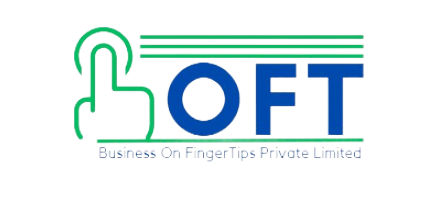




BOFT’s ERP SOLUTION
A Comprehensive ERP Solution for Multi-Company, Multi-Operating Units, and Multi-Inventory Sites
Our comprehensive ERP solution is designed to streamline and optimize the operations of businesses operating across multiple companies, units, and inventory sites. With modular flexibility, the system is tailored to handle complex workflows, providing transparency, control, and efficiency. Below is a detailed overview of the supported modules.
Our financial modules integrate all financial transactions and reporting across multiple companies, ensuring accuracy, compliance, and efficiency in managing company finances.
- General Ledger: Manage multi-company general ledgers, consolidations, and financial reporting.
- Accounts Receivables: Efficiently track payments, manage customer accounts, and handle receipts.
- Accounts Payables: Manage vendor payments, due dates, and invoicing efficiently.
- Cash Management: Monitor cash flow, manage bank accounts, and perform reconciliations.
- Fixed Assets: Manage asset lifecycles from acquisition to depreciation and disposal.
Handle the procurement cycle effectively with detailed processes for demand management and supplier engagement.
- Demand/Indent: Capture and manage procurement demands.
- Comparative Statement: Compare quotations and make informed purchasing decisions.
- Purchase Order: Streamline PO creation, approval, and management.
- Inward Gate Pass, Inspection & Receipts: Ensure accurate material receipts and quality checks.
- Purchase Returns & Outward Gate Pass: Manage material returns and outgoing materials for suppliers.
Comprehensive control of materials and stock at various locations, ensuring optimal inventory levels and accurate tracking.
- Material Receiving & Returns: Track incoming materials and manage returns.
- Material Issuance, Consumptions & Returns: Control and record material usage by departments or consumed in manufacturing and get back the excess or leftover materials.
- Material Transfers: Manage inventory movements between multiple sites.
- On-Hand Stocks & Item Ledgers: View real-time stock levels and detailed transaction histories.
- Stock Replenishment: Ensure stock levels are replenished
- Stock taking and adjustments: Stock discrepancies are addressed through stock-taking.
Accelerate the development cycle and ensure customer satisfaction with streamlined product creation processes.
- Requisition from Customer: Initiate product development requests based on customer needs.
- Spec Designing & Preparation: Manage the design and specifications of new products.
- Product Development & Dispatching: Oversee development stages and sample dispatches.
- Customer Approvals: Ensure customer feedback and approval at each stage.
Manage the full lifecycle of customer orders, from booking to fulfillment.
- Order Booking: Capture and confirm customer orders.
- Delivery Planning: Plan deliveries and ensure timely dispatch.
- Shipment & Delivery: Record actual shipment and delivery details.
- Order Closing: Effectively manage the completion of orders.
- Order Returns: Seamlessly handle returns with accurate tracking and adjustments.
Accurate cost estimation and analysis ensure profitability and informed decision-making.
- Pre-Order & Post-Order Costing: Estimate and analyze costs before and after production.
- Product Costing & Overheads: Calculate product costs, factoring in material, labor, and overheads.
- Costing Analysis: Perform detailed analysis to identify cost-saving opportunities.
Optimize production with detailed planning tools designed to streamline operations.
- Bill of Materials: Create and manage BOMs for efficient production.
- Stock Adjustments: Adjust excess or leftover stocks before proceeding manufacturing planning.
- Production Scheduling (TNA): Plan and track production timelines to ensure on-time delivery.
- Production Routing: Define production processes and resource requirements.
- Capacity Planning: Analyze production capacity and plan for any resource shortfalls.
- Shortfall Planning: In case of high wastages, plan shortfalls timely to meet deadlines.
Manage and track production from raw materials to finished goods, while optimizing performance.
- Production Recording: Track production quantities and timelines.
- Performance & Efficiencies: Measure production efficiency and performance indicators.
- Wastages & Stoppages Management: Monitor and minimize waste and downtime.
- Sub-Contracting / OSP: Outside processing of any process can be subcontracted to external service provider and will be recorded accordingly.
- WIP & Finished Goods Tracking: Track work-in-progress and finished goods inventory.
Ensure that all products meet required quality standards through stringent quality control.
- Quality Plans: Establish and maintain quality control processes.
- Quality Results: Record and analyze quality outcomes.
- Quality Analysis: Perform root-cause analysis and improve processes based on quality results.
Control the flow of materials into and out of your facilities with a robust gate management system.
- Inward Gate Pass (Returnable/Non-returnable): Track materials entering the facility, whether returnable or not.
- Outward Gate Pass (Returnable/Non-returnable): Manage materials leaving the facility with proper documentation.
Seamlessly manage export documentation and logistics to ensure smooth international transactions.
- Container Booking: Book containers and track shipment logistics.
- Packing List: Prepare packing lists as per customs and bank requirements.
- Commercial Invoice: Prepare commercial invoices as per customs and bank requirements.
- Logistics & Freights: Manage logistics and related expenses like clearing, forwarding, insurance, air freight and ocean freight etc.
Ensure robust security and system integrity with a comprehensive administration module.
- User Management: Define users and roles across multiple companies and sites.
- Rights Assignments: Control access levels and module rights based on user roles.
- Core Configurations: Manage system configurations, enabling flexibility and scalability.
This ERP solution provides a unified platform to manage the complexities of multi-company operations, improving collaboration, reducing redundancies, and ensuring complete control over business processes.

